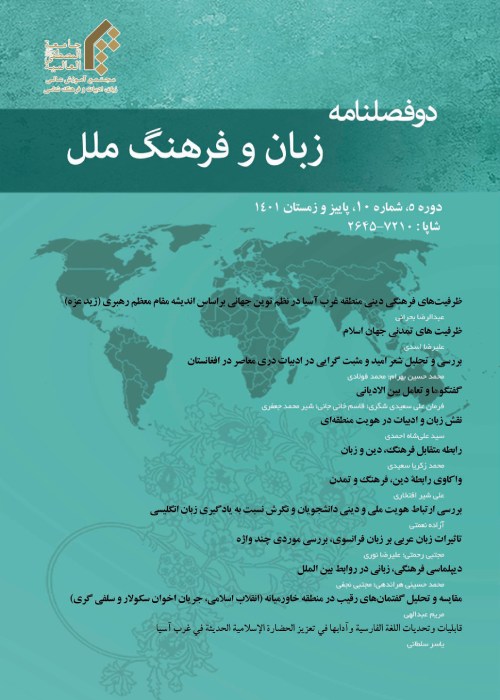Hilali Jughta’i: Hilali Jughta’i; a Poem within the Geographical Scope of Greater Iran from Transoxiana and India to Iraq and Mesopotamia
In the 9th and 10th centuries, Persian poetry had its greatest geographical spread. Persian poetry was supported by the Uzbeks in the northeast, the Ottomans in the west, the Babarians in the east, and the Safavids in the mainland Iran. The poem is in its transition period from Iraqi to Indian style. During the Timurid era, Herat art school was founded and started attracting artists from the surrounding areas to Herat. This period is called the resurrection of Iranian art and the renaissance of art. Literary works of the Herat School have stylistic indicators and distinctive appearances compared to the periods before and even after them. Until the end of the 10th century, Persian poetry showed a conscious moving towards some kind of innovation or transformation. Hilali Jughata’i, like other poets of this era, is influenced by the poetry of the 9th century, and has also some manifestations of the innovations of the school of occurrence. However, some consider him to be one of the guardians of the poetry of the Timurid period. Religiously speaking, Hilali was a Shia. The Timurid government was not religiously strict. They respected the beliefs of the Shias - they even engraved the names of the Shia Imams on the coins instead of the names of the Sunni caliphs. With the formation of the ideology of Safavid Shiism, the ground was paved for religious challenges; a ground in which did not spare the lives of Shia poets such as Hilali and Sunni ones like Banai Heravi Sunni. He has poems describing the Prophet and praising Imam Ali, Imam Hasan and Imam Hussain. Hilali Poetry includes his sonnets, poems, pieces and quatrains. The Mathnavi of the Shah and the Beggar and The Lovers’ Features were also composed under the influence of Nizami's works. He should be considered one of the pioneers of the change of style and the forerunners of the school of occurrence, whose poems were influential from Transoxiana and India to Iran, Ottoman Empire and Mesopotamia.
- حق عضویت دریافتی صرف حمایت از نشریات عضو و نگهداری، تکمیل و توسعه مگیران میشود.
- پرداخت حق اشتراک و دانلود مقالات اجازه بازنشر آن در سایر رسانههای چاپی و دیجیتال را به کاربر نمیدهد.



